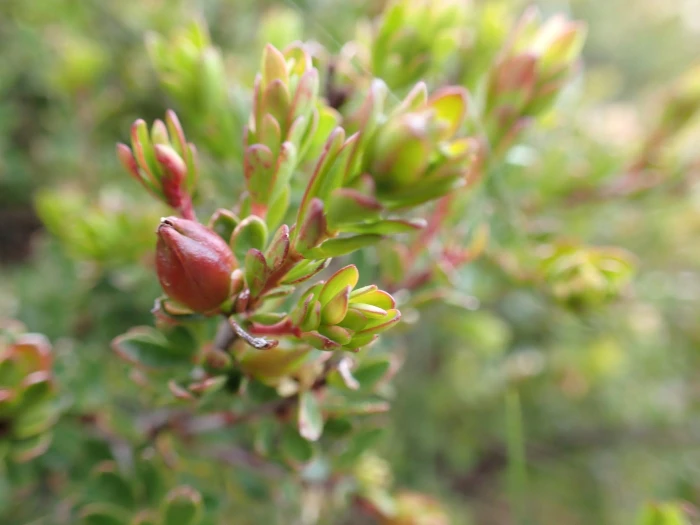Box Micrantheum
(Micrantheum hexandrum)
Box Micrantheum (Micrantheum hexandrum)
/
/

© Nina Kerr
CC BY 4.0
Image By:
© Nina Kerr
Recorded By:
Copyright:
CC BY 4.0
Copyright Notice:
Photo by: © Nina Kerr | License Type: CC BY 4.0 | License URL: http://creativecommons.org/licenses/by/4.0/ | Uploader: ninakerr01 | Publisher: iNaturalist |

























Estimated Native Range
Climate Requirements for Grants Pass, Oregon
| This Plant | Your Site | Plant Suitability for Your Location | ||
|---|---|---|---|---|
| • Precipitation | 8" - 98" | 33" | Your precipitation may be insufficient for this plant. Irrigate N" / year. | Irrigate N" / year |
| • High Temp. | 62°F - 100°F | 90°F | Your summer temperatures are normal for this plant. | Excellent |
| • Low Temp. | 19°F - 50°F | 33°F | Your winter temperatures are normal for this plant | Excellent |
This plant should grow well at your location with about N inches per year (Y minutes per month) of irrigation.
Summary
Micrantheum hexandrum, commonly known as Box Micrantheum, is a monoecious shrub native to montane and subalpine regions in eastern Australia, including Queensland, New South Wales, Victoria, and Tasmania. It is typically found in moist eucalypt forests, heathlands, and along watercourses at higher altitudes. This erect shrub can grow to about 6.5 feet tall and features oblong to narrowly lance-shaped leaves. From October to February, it produces small, inconspicuous white flowers with six or nine stamens, which are not particularly showy but are of ecological importance for local pollinators.
Box Micrantheum is valued for its hardiness and ability to thrive in cool, moist conditions, making it suitable for cultivation in similar climates. It is often used in native plant gardens and as part of revegetation projects where its local provenance is an advantage. Gardeners should provide it with well-drained, acidic to neutral soils and ensure it receives adequate moisture, especially during dry periods. It prefers part shade to full sun exposure. While not widely known for ornamental use, its resilience and ecological role in supporting native fauna make it a beneficial addition to conservation-focused landscapes. There are no major diseases or pests reported, but it may not be suitable for very dry or warm climates.CC BY-SA 4.0
Box Micrantheum is valued for its hardiness and ability to thrive in cool, moist conditions, making it suitable for cultivation in similar climates. It is often used in native plant gardens and as part of revegetation projects where its local provenance is an advantage. Gardeners should provide it with well-drained, acidic to neutral soils and ensure it receives adequate moisture, especially during dry periods. It prefers part shade to full sun exposure. While not widely known for ornamental use, its resilience and ecological role in supporting native fauna make it a beneficial addition to conservation-focused landscapes. There are no major diseases or pests reported, but it may not be suitable for very dry or warm climates.CC BY-SA 4.0
Plant Description
- Plant Type: Shrub
- Height: 0.3-1 feet
- Width: 2-3 feet
- Growth Rate: Moderate
- Flower Color: White
- Flowering Season: Spring
- Leaf Retention: Evergreen
Growth Requirements
- Sun: Full Sun, Part Shade
- Water: Medium
- Drainage: Fast
Common Uses
Border Plant, Drought Tolerant, Low Maintenance, Rock Garden
Natural Habitat
Native to montane and subalpine regions in moist eucalypt forests, heathlands, and along watercourses at higher altitudes in eastern Australia
Other Names
Common Names: Erect Micrantheum
Scientific Names: Micrantheum hexandrum, Caletia hexandra, Caletia micrantheoides, Micranthea hexandra, Phyllanthus boroniacus, Phyllanthus boroniacus
GBIF Accepted Name: Micrantheum hexandrum